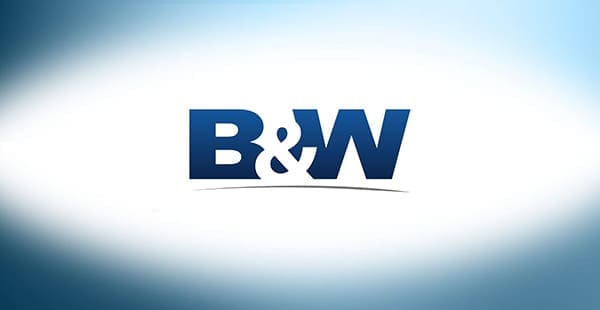Babcock & Wilcox History of Asbestos Use
B&W was founded in 1867 and began developing boilers. Like many similar companies, it added asbestos insulation to its products. Asbestos was popular for its heat resistance but posed serious health risks, like causing mesothelioma to develop. Despite this, B&W did not stop using asbestos until the 1970s.
Starting in the 1880s, the company expanded internationally with facilities in Scotland. It later opened factories in South America, Europe, Africa, the Middle East and Asia. This led to increased asbestos exposure risks globally.
B&W asbestos boilers were distributed to many industries across the United States. Examples include sugar refineries, electric companies and transportation systems.
Its boilers were also used aboard U.S. Navy vessels and in high-profile projects, including:
- The Hoover Dam
- New York City subways
- Thomas Edison’s laboratories
During World Wars I and II, B&W boilers were common. More than 4,000 military vessels were built for World War II with these boilers. This may have been one factor in widespread veteran asbestos exposure.
For decades, B&W asbestos boilers have exposed workers, veterans and their families. B&W settled its first asbestos lawsuit in 1982. Over the next two decades, it faced hundreds of thousands of legal actions from people affected by its asbestos use. In 2000, the company filed for bankruptcy because of legal costs. The trust fund is still active and accepting claims.
Resources for Mesothelioma Patients
Babcock & Wilcox Asbestos Trust Fund
B&W formed an asbestos trust fund as part of its bankruptcy reorganization plan. The trust fund was formed in February 2006 and initially funded with $1.85 billion. Its purpose is to compensate victims who file asbestos-related claims.
Most Recent Information From Babcock & Wilcox Asbestos PI Trust
The trust’s year-end 2024 report revealed, as of December 31, 2024:
- Over 19,000 Babcock & Wilcox Asbestos PI Trust claims were paid.
- Over 27,700 unliquidated personal injury claims were received by the trust.
- Approximately $28.5 million was paid to asbestos victims by the trust.
- The Babcock & Wilcox Asbestos Trust has received over 747,000 unliquidated claims since it was established.
- Approximately 403,000 asbestos trust claims have been paid since the trust was established.
- Over $1.94 billion has been paid in claim settlements to asbestos victims since the trust was established.
- Approximately $291.7 million in total assets remains in the trust.
The asbestos trust pays a set percentage of each successful award granted to an asbestos victim. This ensures money is available for future claimants.
Current Babcock & Wilcox Company Asbestos PI Trust Payment Percentage
The current payment percentage is 4.7% for the Babcock & Wilcox Company Asbestos PI Trust. At a payment percentage of 4.7%, the current payout on a Babcock & Wilcox Expedited Review claim for mesothelioma is $4,230. Factors that may affect compensation amount include age, exposure, type of asbestos illness and law firm’s settlement history.
Determining Review Process When Filing a Babcock & Wilcox Asbestos PI Trust Claim
An experienced asbestos attorney will assess a mesothelioma victim’s information to determine the appropriate review process for filing a Babcock & Wilcox asbestos trust claim. A sampling of Babcock & Wilcox claims filed between 2022 and 2024 indicated that approximately 74% of Babcock & Wilcox claims were filed under the Expedited Review (ER) process. Approximately 26% of Babcock & Wilcox claims were filed using the Individual Review (IR) process.
- Expedited Review Process: Babcock & Wilcox claims should be filed under the ER process when the claimant meets all exposure and medical requirements outlined in the Trust Distribution Procedures and is above a specified age. These claims will undergo a seamless review process, and will receive the standard scheduled value based on the diagnosed disease level.
- Individual Review Process: Claims submitted under the IR process will receive a thorough evaluation of the claimant’s exposure, medical records and personal information to determine the individualized liquidated value of the Babcock & Wilcox claim. It’s recommended to file under the IR process when the claimant was diagnosed before age 70, for potential higher valuation. Filing as IR is required when a client’s records don’t satisfy trust criteria, for certain lung cancer diagnoses or secondary exposure.
The trust is still accepting claims today to compensate asbestos victims. Payments may vary and depend on the injured party’s diagnosis, age, exposure history and the law firm’s settlement history. If you or a loved one believe you are entitled to compensation, learn how a mesothelioma lawyer can help.
Babcock & Wilcox Asbestos Products
Like many other companies, B&W used asbestos fibers in its products as a cheap insulator. Adding asbestos fibers to materials increased durability and heat resistance.
B&W used asbestos in its groundbreaking boilers until the early 1970s. The boilers commonly featured asbestos-containing insulation, block, heat seals, gaskets and gauges.
Products manufactured by B&W known to have contained asbestos include:
- Babcock & Wilcox FJ Furnace Boilers
- Babcock & Wilcox Gauges
- Babcock & Wilcox Insulating Firebricks
- Babcock & Wilcox Integral-Furnace Boilers
- Babcock & Wilcox Marine Boilers
- Babcock & Wilcox Steam-Generating Boiler Products
- Babcock & Wilcox Stirling Boilers
- Babcock & Wilcox Type E Pulverizers
The above is not a complete list of B&W asbestos products. Mesothelioma lawyers are skilled in tracking down products that may have caused clients’ asbestos exposure. Victims can consult them to learn more about potential exposure sources.
Babcock & Wilcox and Occupational Exposure
Anyone who worked for B&W or with its products may have experienced occupational asbestos exposure. The company stopped making asbestos products in the 1970s, but some are still in use today.
Exposure may have occurred at many jobsites, including B&W factories. B&W asbestos boilers were used globally in refineries, foundries, power plants, nuclear facilities and ships.
Those who installed or serviced B&W boilers may also have experienced occupational exposure. Any person working with or near B&W asbestos products may face risks of developing asbestos-related diseases.
Asbestos Lawsuits Against Babcock & Wilcox
The first asbestos lawsuit against B&W was filed in 1982. At that time, the company was settling claims by compensating victims outside of court. For more than a decade, B&W continued using this method to deal with its mounting asbestos litigation problems.
By the end of 1999, they had settled about 340,000 claims. These asbestos settlements cost the company and its insurer more than $1.6 billion.









